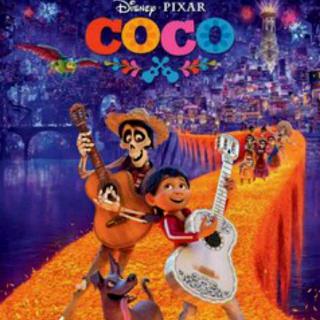
介绍:
主播:Sherry
编辑:丁淑晗
亡灵节?鬼节?
Welcome to our CRS. All members of this program will send the best wishes to you, we expect that you will be happy and have a good time. There we will talk about something interesting, share emotions and listen to music. What's more, the content can improve our enthusiasm for learning English. Today, we will talk about festival. Listen to the melody, the sound of the campus radio service begins broadcasting now.
正在热映的《寻梦环游记》你看过了吗?据说无数人笑着进场,哭着退场,电影中热闹的亡灵节引起了不少人的关注。一听这个节日的名字,可能会有些害怕。亡灵节,难道是鬼节?通俗的来说,是这样的。亡灵节是墨西哥的传统节日,也算是他们的鬼节吧。但比起鬼节,它更像是个狂欢节,因为每到这个节日,墨西哥城里的老老少少都会装扮成骷髅、鬼怪的样子,走上街头,又唱又跳。
Death, is a very heavy topic in Chinese culture. It is such a taboo that even mentioning the word made the air feel heavy. The ways we honor our ancestors are very solemn and respectful. Traditionally, there are three times in a year that people would pay respect to their ancestors: Tomb sweeping Day, Hungry Ghost Festival and Double Ninth Festival. During these times of a year, people will burn goods made of paper in hope of the families on the other side can receive them. Also for big families, cleaning out the ancestral hall, offering food, and burning incense are common practices.All of these actions are signs of respect and love.
In the movie Coco, it is reflected that death seems to be less of a heavy topic in Mexico compared to Chinese belief. Mexican people celebrate their ancestors by music, food and parties.It almost feels as if they have to demonstrate how awesome they are living so that their families can be happy when they come back to our world to visit them. On the Day of the Dead, which is Nov 1stand 2nd, people would paint their faces, prepare food for their ancestors and decorate everywhere with marigold. Marigold represents the power of sunshine,and pave the road from the death world to our world.
No matter what they do, the idea is the same, people show their love and care of the family members who have passed away.
在墨西哥文化里,死是另一种形式的生。墨西哥人继承了阿兹台克文化的生命哲学,他们认为死亡并不意味着结束,而是生命以另一种形态的开始。
诺贝尔文学奖获得者、墨西哥作家奥克塔维奥·帕斯说:“对于纽约、巴黎或是伦敦人来说,死亡是他们轻易不会提起的,因为这个词会灼伤他们的嘴唇。然而墨西哥人却常把死亡挂在嘴边,他们调侃死亡、与死亡同寝、庆祝死亡。”
The Mexican Days of the Dead Festival shares some of its origins with Halloween. And some of the practices today are also similar, from decorating with pictures of skeletons, to ghoulishly shaped sweets. The Aztecs’ Festival of the Dead went on for nearly two months in which the fall harvest was celebrated and death was honored. Aztecs and Mayans both believed that one day of the year the souls of the departed would return to the realm of the living, where they could visit their families and loved ones.
Families place photographs of their loved ones who have passed on at the deceased's grave or on a family altar. They also place offerings of flowers, drinks and food alongside the photographs. This ritual is particularly important for those who have been lost in the year since the previous festival. Sweets, fruits, and other foods are joined by the staples: bread, salt, and water. Grooming supplies, such as a washbasin and soap, are provided for the spirits to tidy themselves after their long journey.
女性的骷髅形象有个名子叫做“Catrina”,它的原型是1910年时一位版画家创造的。Catrina被塑造为一个幽默快乐的“死亡女士”,来源于贫苦的印第安人努力学习“高贵”的法国女人的样子,用来讽刺欧洲贵族的矫情并表达印第安文化所受到的巨大冲击。
在亡灵节的时候会有成千上万打扮成Catrina的女生走上街头,大方展示自己别样的美丽,并且各种骷髅主题的器物、食物、服装此时也纷纷上市,让墨西哥一时变成骷髅的国度。
在亡灵节这天,对色彩充满激情的墨西哥人也会将自己化妆成想象中亡灵的样子,为的是与亲人“相认”、“团聚”和“狂欢”。
Time gone too fast. Now we have to say goodbye. I hope you will get something useful from listening to today's broadcast, and hope you have a good time. Here is my voice, and here is my caring. Thank you for the students to listen to me. See you next time!
大家还在听

